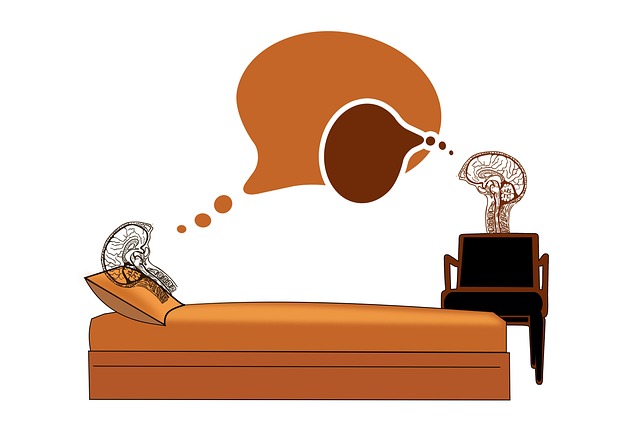Cognitive Behavioral Therapy (CBT) is a powerful, evidence-based mental health treatment focusing on modifying negative thought patterns and behaviors to improve emotional well-being. CBT educates individuals about their conditions, helping them identify unhelpful thinking habits and replace them with positive alternatives. Through structured sessions and practical techniques like role-playing, clients gain self-awareness and develop personalized coping strategies. Integrating CBT techniques into daily life promotes mental resilience, stress management, and sustained wellness, making it an effective tool for managing various mental health disorders including anxiety, depression, PTSD, and OCD.
“Discover the transformative power of CBT therapy, a pioneering approach in mental health treatment. This article explores the fundamentals of Cognitive Behavioral Therapy (CBT), delving into its effective mechanisms and wide-ranging benefits for various mental health disorders.
From understanding the core principles to navigating the therapeutic process step-by-step, we demystify CBT. Learn how it empowers individuals to manage conditions like anxiety, depression, and OCD, offering practical tips for integrating CBT techniques into daily life for sustained well-being.”
Understanding CBT Therapy: Unveiling the Basics

CBT therapy, or Cognitive Behavioral Therapy, is a powerful and widely recognized form of behavioral therapy that focuses on identifying and changing negative thought patterns and behaviors. At its core, CBT recognizes that our thoughts, feelings, and actions are interconnected. Negative or distorted thinking can lead to unhealthy emotions and behaviors, impacting our overall mental health and well-being.
This therapeutic approach works by helping individuals become aware of their automatic negative thoughts and challenging their validity. By replacing these unhelpful thoughts with more realistic and positive ones, CBT enables people to manage their emotional responses and adopt healthier coping strategies. Through this process, individuals can learn to navigate difficult situations with increased resilience, improve their mood, and enhance their overall quality of life.
How Does CBT Work? The Mechanisms Behind the Therapy

CBT, or Cognitive Behavioral Therapy, is a highly effective form of mental health treatment that focuses on identifying and changing negative thought patterns and behaviors. It works by helping individuals understand the connection between their thoughts, feelings, and actions, often referred to as the mind-body connection. By challenging and modifying these unhelpful thought processes, CBT enables people to improve their emotional well-being and overall quality of life.
The therapy is based on the idea that our thoughts significantly impact our emotions and behaviors. For instance, negative or distorted thinking can lead to feelings of anxiety or depression and subsequently influence actions and decisions. CBT aims to disrupt this cycle by teaching individuals to recognize these thought patterns, replace them with more realistic and positive ones, and consequently alter their emotional responses and behaviors. This process empowers people to take control of their mental health and develop coping strategies that are tailored to their unique needs.
Benefits of CBT for Mental Health Disorders

Cognitive Behavioral Therapy (CBT) is a highly effective approach for treating various mental health disorders, offering numerous benefits that have been well-documented in research. One of its key strengths lies in its ability to empower individuals by providing them with practical tools and strategies to manage their symptoms and improve overall well-being. CBT focuses on identifying and changing negative thought patterns and behaviors, which are often at the root of mental health issues.
By engaging in CBT therapy, individuals can learn to challenge distorted thinking, reduce anxiety and depression symptoms, and enhance their problem-solving skills. This form of therapy encourages active participation, where patients work collaboratively with therapists to set goals and practice new techniques in between sessions. The structured nature of CBT allows for a clear understanding of one’s thoughts, feelings, and behaviors, fostering self-awareness and encouraging long-lasting positive changes.
Common Mental Health Issues Treated with CBT

Common Mental Health Issues Treated with CBT
Cognitive Behavioral Therapy (CBT) is a widely recognized and effective form of psychological treatment used to address a variety of common mental health issues. Among the conditions that CBT has shown significant success in treating are depression, anxiety disorders, post-traumatic stress disorder (PTSD), and obsessive-compulsive disorder (OCD). Depression, characterized by persistent feelings of sadness and hopelessness, can be managed through CBT by identifying and changing negative thought patterns and behaviors. Similarly, CBT helps individuals with anxiety disorders recognize and challenge irrational fears and anxieties, leading to a reduction in symptoms.
For PTSD, CBT focuses on processing traumatic memories and developing coping strategies to manage flashbacks and nightmares. OCD, marked by intrusive thoughts and repetitive behaviors, can be treated through techniques that help individuals confront their obsessions and reduce the urge to perform compulsive acts. By targeting these specific mental health issues, CBT offers a structured approach to healing and improved well-being.
The Therapeutic Process: Step-by-Step Guide to CBT Sessions

The process of Cognitive Behavioral Therapy (CBT) involves a structured and collaborative approach, guiding individuals towards better mental health. A typical CBT session begins with an assessment, where the therapist understands the client’s concerns and goals. This initial step is crucial for tailoring the treatment plan to the individual’s needs. The therapist will then educate the client about their specific condition, helping them recognize unhelpful thoughts and behaviors.
During subsequent sessions, the focus shifts to identifying and challenging distorted thinking patterns. Therapists teach clients how to replace negative thought cycles with more realistic and positive ones. Through various techniques like role-playing, homework assignments, and tracking progress, CBT empowers individuals to manage their symptoms effectively. This step-by-step process encourages self-awareness and provides practical tools for coping with daily challenges, fostering improved mental well-being.
Integrating CBT into Daily Life: Tips for Continuous Well-being

Integrating Cognitive Behavioral Therapy (CBT) into daily life is a powerful way to maintain mental well-being and prevent relapse. CBT encourages individuals to identify and challenge negative thought patterns, replacing them with more realistic and positive ones. This process can be enhanced by incorporating simple practices into everyday routines. For instance, keeping a journal to track thoughts and emotions allows for self-reflection and the ability to pinpoint triggers. Regular mindfulness exercises, such as meditation or deep breathing, help individuals stay grounded in the present moment, reducing the impact of anxious or depressive thoughts.
Additionally, setting achievable goals and breaking tasks into manageable steps promotes a sense of accomplishment and builds resilience. Engaging in regular physical activity, adequate sleep hygiene, and healthy eating habits are also integral parts of self-care that support overall mental health. By making these practices habitual, individuals can better manage stress and maintain the positive insights gained during CBT therapy sessions.
